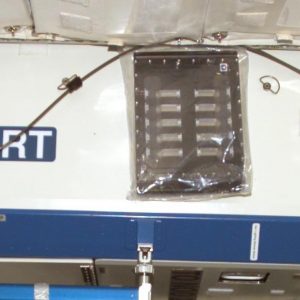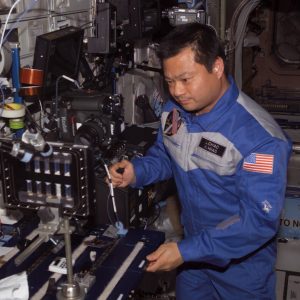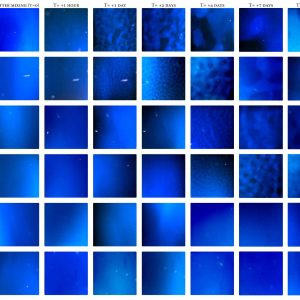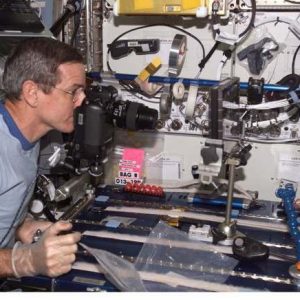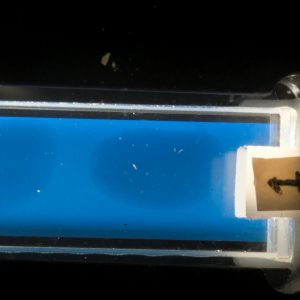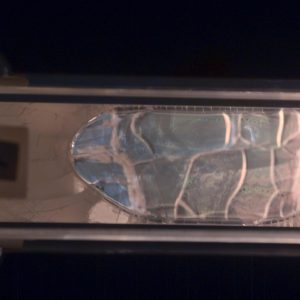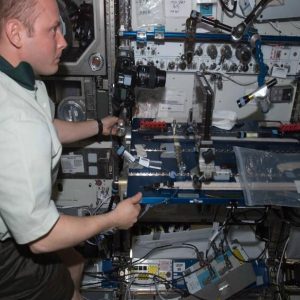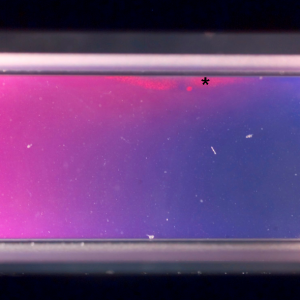Binary Colloidal Alloy Test-3
Binary Colloidal Alloy Test-3 (BCAT-3)
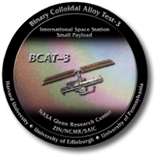 The Binary Colloidal Alloy Test-3 (BCAT-3) hardware supported three investigations in which ISS crews photographed samples of colloidal particles (tiny nanoscale spheres suspended in liquid) to document liquid/gas phase changes, growth of binary crystals, and the formation of colloidal crystals confined to a surface. Colloids are small enough that in a microgravity environment without sedimentation and convection, they behave much as atoms and so can be used to model all sorts of phenomena because their size, shape, and interactions can be controlled.
The Binary Colloidal Alloy Test-3 (BCAT-3) hardware supported three investigations in which ISS crews photographed samples of colloidal particles (tiny nanoscale spheres suspended in liquid) to document liquid/gas phase changes, growth of binary crystals, and the formation of colloidal crystals confined to a surface. Colloids are small enough that in a microgravity environment without sedimentation and convection, they behave much as atoms and so can be used to model all sorts of phenomena because their size, shape, and interactions can be controlled.
The BCAT-3 payload consists of ten small samples of colloid alloys in which the microscopic colloid particles are mixed together into a liquid. These ten samples are contained within a small case that is the size of a school textbook. At the start of an experiment run, all ten samples are shaken to completely remix the colloid samples, much in the same way that salad dressing must be shaken to remix oil and vinegar. After the samples are mixed, what remains is periodically photographed using a digital camera until the colloid and liquid components of those samples have separated or the polymers have formed crystals. The samples can be remixed to repeat the experiment.
The ten samples in BCAT-3 were selected as part of three separate experiments examining different physical processes: critical point, binary alloys, and surface crystallization. Sample 7 makes up the BCAT-3-BA part of the experiment and it is a binary alloy.
Colloids are also technologically interesting because they are the right size to manipulate light. Natural opal is likely the oldest and best known of the “photonic” crystals that direct light. Shine white light on the opal and a rainbow appears, demonstrating how colors of light are split up and sent in different directions. The ability to better control the movement of light is a major technological goal, not only to build computers operating on light instead of electricity but also to harness the full capabilities of existing fiber-optic networks for improving communications. Crystal structures built from only one building block, e.g., the arrangement of colloidal silica spheres in an opal, are well understood, but their optical properties are limited. More useful photonic crystals can be built from two different types of building blocks mixed together, yielding a binary alloy. The resulting structures and their optical properties are vast, as both the size and the proportion of the two building blocks can be varied. How crystallization is affected by these changes is only beginning to be explored. Theoretical studies suggest that desired optical properties require more complicated crystal structures, but this has not been well explored experimentally. Microgravity is crucial to the binary crystal experiments, allowing the growth of crystals far larger than those created on the surface of Earth. The BCAT-3 binary alloy sample furthers previous investigations on binary growth in space.
Binary Colloidal Alloy Test – 3: Critical Point (BCAT-3-CP)
- Binary Colloidal Alloy Test – 3 and 4: Critical Point (BCAT-3-4-CP) uses microscopic spheres (described as colloids) suspended in a liquid to serve as a large scale representation of the atoms and small molecules which constitute typical solids, liquids, and gases so that scientists can visualize what happens at the individual particle level when materials transition from liquids to gases.
- These systems of microscopic spheres help scientists visualize when specific conditions (i.e. temperature, pressure, and concentration) drive the formation of solids, liquids, and gases in smaller systems based upon atoms and simple, small molecules.
- Depending on their relative distances and energies with respect one another, atoms and molecules organize themselves to form gases, liquids, or solids. By varying the concentrations of the microscale spheres, this experiment studies the critical point of these systems where gases and liquids no longer exist as separate entities and a new state of matter forms when one reaches a critical point.
- BCAT-3-4-CP can only be performed in microgravity where gravitational forces do not interfere with the experiment.
- The application of this experiment in the near term is to enhance the shelf life of everyday products and in the longer term, the development of revolutionary materials for electronics and medicine.
Binary Colloidal Alloy Test – 3: Binary Alloys (BCAT-3-BA)
- The BCAT-3-BA develops new crystals from microscopic particles (known as colloids) that are capable of manipulating beams of light in a controlled and predictable way.
- Colloids are suspensions of very small particles within a liquid (paint, ink and milk) and can be used to study the solidification processes that may lead to colloid engineering and the manufacture of uniquely fine controlled materials from colloids. Colloids are easier to study in microgravity where the effects of sedimentation and convection are minimized.
- These new colloid materials have applications in the communications and computer industries for switches, displays and optical devices.
Binary Colloidal Alloy Test – 3: Surface Crystallization (BCAT-3-SC)
- The primary goal of Binary Colloidal Alloy Test – 3: Surface Crystallization (BCAT-3-SC)is to explore the patterns made by the natural ordering of liquid-suspended microscopic spheres in microgravity.
- Colloids are microscopic spheres suspended in a liquid. These microscopic spheres are suspended in a liquid containing an added polymer (a large synthetic molecule) which allows the scientists to control how the spheres come together. Under the right circumstances the presence of the polymer will cause these suspended spheres will prefer to crystallize on the container surfaces, rather than in the sample volume.
- Controlling the positioning of these micron sized spheres (or colloids) may be lead to the development of next generation optical devices.

